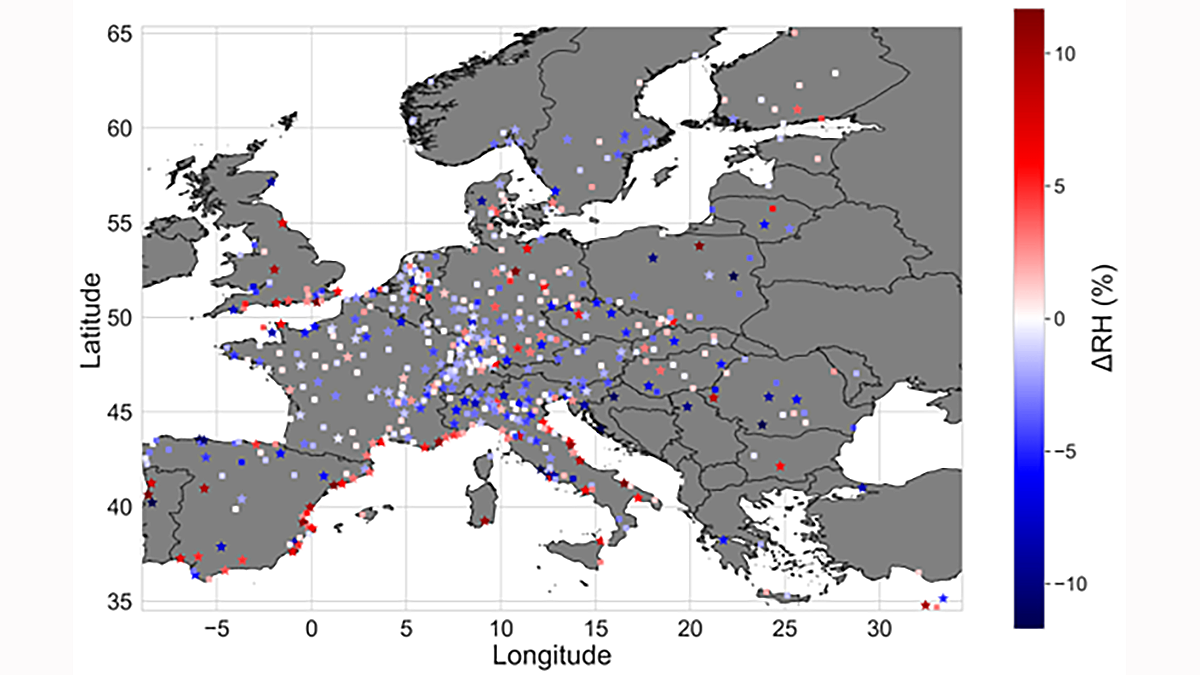Source: AGU Advances
Editors’ Highlights are summaries of recent papers by AGU’s journal editors.
A central theme in urban climatology is that cities have higher air temperature, and thus higher potential for heat stress, than their background rural landscapes. Thus, surface temperature is often used as a proxy for urban heat stress. However, surface temperature is different from air temperature, and several other factors contribute to heat stress. It is critical to know how well, if at all, surface temperature can capture the potential for urban heat stress, which has been traditionally difficult to measure using ground observations due to data scarcity. Chakraborty et al. [2022] use measurements from over 40,000 citizen weather stations across Europe to address this important gap and compare distributions of satellite-derived surface temperature, air temperature, and heat indices during the July 2019 heatwave. Urban heat island maps may not always be the best decision-making tool available. The study finds that lower relative humidity due to urbanization partly offsets the effect of higher air temperatures and thus moderates the potential for urban heat stress. Moreover, satellite-derived surface temperature shows very weak relationships with air temperature and heat index, both within cities and when examining urban-rural differences across cities. Finally, urban vegetation is much less effective at reducing heat index than at reducing surface temperature. These results are relevant for informing future urban research and heat mitigation efforts.
Citation: Chakraborty, T., Venter, Z. S., Qian, Y., & Lee, X. (2022). Lower urban humidity moderates outdoor heat stress. AGU Advances, 3, e2022AV000729. https://doi.org/10.1029/2022AV000729
—Don Wuebbles, Editor, AGU Advances

